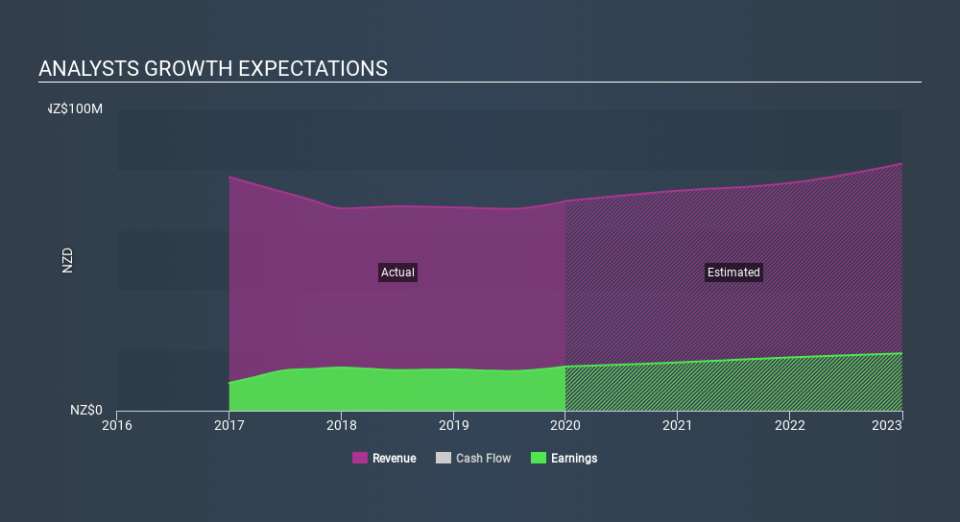Earnings Update: Here's Why Analysts Just Lifted Their NZX Limited Price Target To NZ$1.24

NZX Limited (NZSE:NZX) just released its yearly report and things are looking bullish. The company beat expectations with revenues of NZ$70m arriving 3.0% ahead of forecasts. Statutory earnings per share (EPS) were NZ$0.053, 2.8% ahead of estimates. Earnings are an important time for investors, as they can track a company's performance, look at what top analysts are forecasting for next year, and see if there's been a change in sentiment towards the company. We've gathered the most recent statutory forecasts to see whether analysts have changed their earnings models, following these results.
Check out our latest analysis for NZX
Taking into account the latest results, the most recent consensus for NZX from three analysts is for revenues of NZ$73.0m in 2020, which is a reasonable 5.0% increase on its sales over the past 12 months. Statutory earnings per share are expected to expand 12% to NZ$0.06. Yet prior to the latest earnings, analysts had been forecasting revenues of NZ$70.8m and earnings per share (EPS) of NZ$0.057 in 2020. It looks like there's been a modest increase in sentiment following the latest results, with analysts becoming a bit more optimistic in their predictions for both revenues and earnings.
With these upgrades, we're not surprised to see that analysts have lifted their price target 6.4% to NZ$1.24 per share. Fixating on a single price target can be unwise though, since the consensus target is effectively the average of analyst price targets. As a result, some investors like to look at the range of estimates to see if there are any diverging opinions on the company's valuation. The most optimistic NZX analyst has a price target of NZ$1.30 per share, while the most pessimistic values it at NZ$1.18. The narrow spread of estimates could suggest that the business' future is relatively easy to value, or that analysts have a clear view on its prospects.
Another way to assess these estimates is by comparing them to past performance, and seeing whether analysts are more or less bullish relative to other companies in the market. One thing stands out from these estimates, which is that analysts are forecasting NZX to grow faster in the future than it has in the past, with revenues expected to grow 5.0%. If achieved, this would be a much better result than the 0.9% annual decline over the past five years. By contrast, our data suggests that other companies (with analyst coverage) in a similar industry are forecast to see their revenue grow 5.4% per year. So it looks like NZX is expected to grow at about the same rate as the wider market.
The Bottom Line
The biggest takeaway for us from these new estimates is that the consensus upgraded its earnings per share estimates, showing a clear improvement in sentiment around NZX's earnings potential next year. They also upgraded their revenue forecasts, although the latest estimates suggest that NZX will grow in line with the overall market. Analysts also upgraded their price target, suggesting that analysts believe the intrinsic value of the business is likely to improve over time.
Even so, the longer term trajectory of the business is much more important for the value creation of shareholders. We have estimates - from multiple NZX analysts - going out to 2022, and you can see them free on our platform here.
It might also be worth considering whether NZX's debt load is appropriate, using our debt analysis tools on the Simply Wall St platform, here.
If you spot an error that warrants correction, please contact the editor at editorial-team@simplywallst.com. This article by Simply Wall St is general in nature. It does not constitute a recommendation to buy or sell any stock, and does not take account of your objectives, or your financial situation. Simply Wall St has no position in the stocks mentioned.
We aim to bring you long-term focused research analysis driven by fundamental data. Note that our analysis may not factor in the latest price-sensitive company announcements or qualitative material. Thank you for reading.

